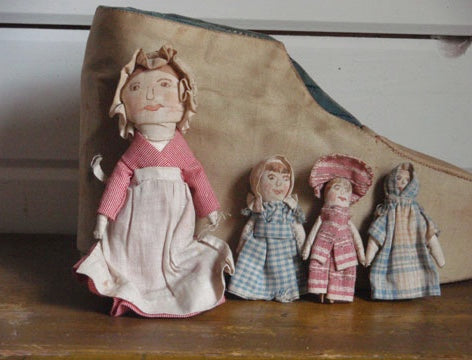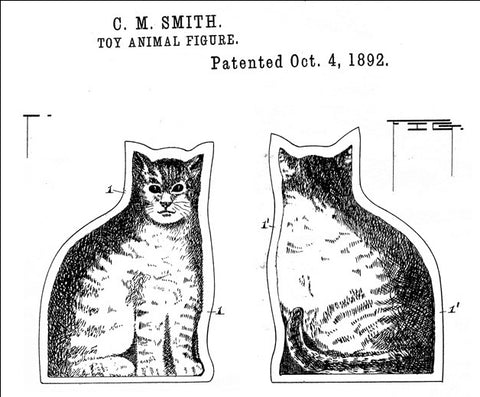Get Stuffed
You'd be hard pushed to find a single soul who didn’t cuddle a stuffed toy or two when they were growing up. I know some people – in middle age and beyond – whose beds are still home to a love-worn bear or a three-legged elephant or an eyeless rabbit.
Soft toys are a rite of passage, a comfort and a joy. But where did they come from? Why are bears the most traditional animal to be ‘stuffed’? And what is the enduring appeal of a soft fluffy menagerie?
While the 1970s offered youngsters Weebles and the decidedly uncuddley pet rocks, the 1980s brought kids Care Bears and Pound Puppies. Since then we’ve had Trolls and Furbies and Beanie Babies.

But, apparently stuffed toys were around as far back as the ancient Egyptians, according to wall etchings (children also enjoyed ‘cat’ pull toys, so not much has changed there, either).
It was in the late 19th century that soft toys really gained traction and started to be a mass-produced part of childhood.

Image from The Cat Lady Antiques
The Ithaca Kitty is one of the first examples of stuffed animals. First created in 1892 in Ithaca, New York inspired by a the fabulously named tabby cat Caesar Grimalkin, this was a simple design of sitting cat-shaped front and back panels, with Grimalkin drawn on top. That first holiday season saw 200,000 Ithaca Kitties sold. It was popular as a children’s toy until after World War I but it was also used by farmers to scare away birds and by the Central Park police station to scare mice.

In 1880, the German company Steiff began to manufacture stuffed toys, but it wasn’t until 1903 that the company created a bear from soft, furry fabric. In the same year Morris Michtom created the first ‘teddy’, having seen a drawing of President ‘Teddy’ Roosevelt and a bear cub. In fact, 1903 was such a big year in stuffed toy manufacturing that it also saw Beatrix Potter’s Peter Rabbit become the first soft toy to be patented.
One of our favourite characters in the history of toys is, unsurprisingly, the Sock Monkey which is made out of – you guessed it – socks! Sound familiar? The monkeys first appeared during the Great Depression which swept across the US between 1929 and 1939 and became popular in Canada too. The monkeys are still popular today – there’s even the Sock Monkey Madness Festival dedicated to them – and are seen as good luck charms and creatures to comfort.
Image: JENNA DOOLEY / WNIJ
Nothing beats a creature that is handmade, with carefully selected materials and sewn up with love. The origin behind Red Rufus is of course my beloved Irish Setter who is my inspiration, constant work buddy and walking partner. I’m so pleased to have given him a whole menagerie of companions, including hippos and cats, who all have their own names and stories. I get a thrill when I know that I am creating animals to share with so many different children – and that they will go with them from cradle to bed to university halls and beyond. That, here in my attic studio Red Rufus is the start of lots of little branches of history.




